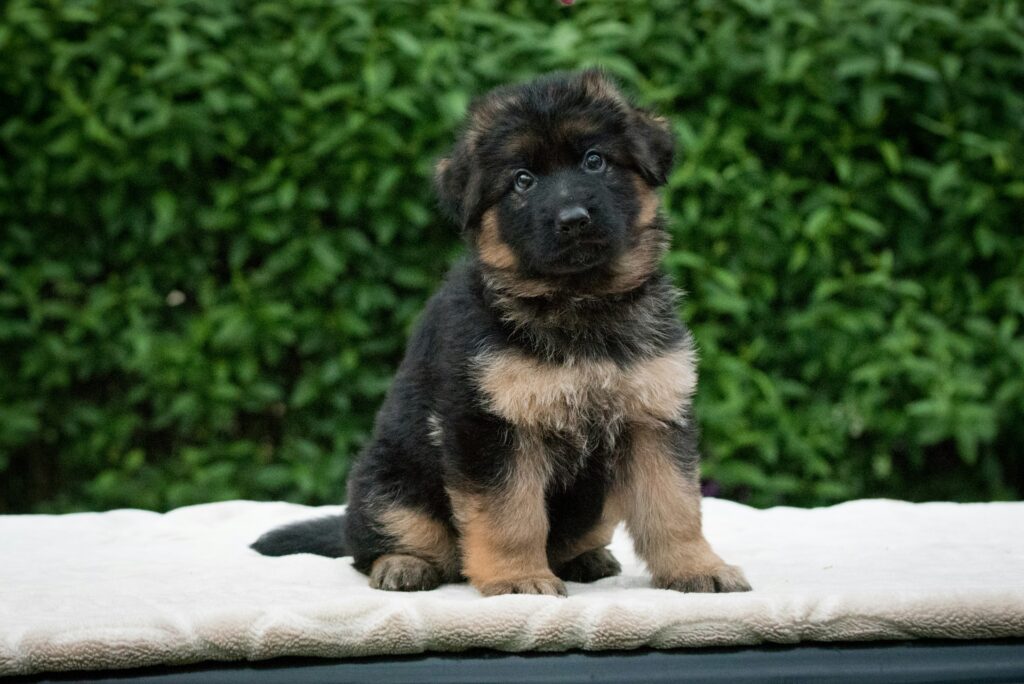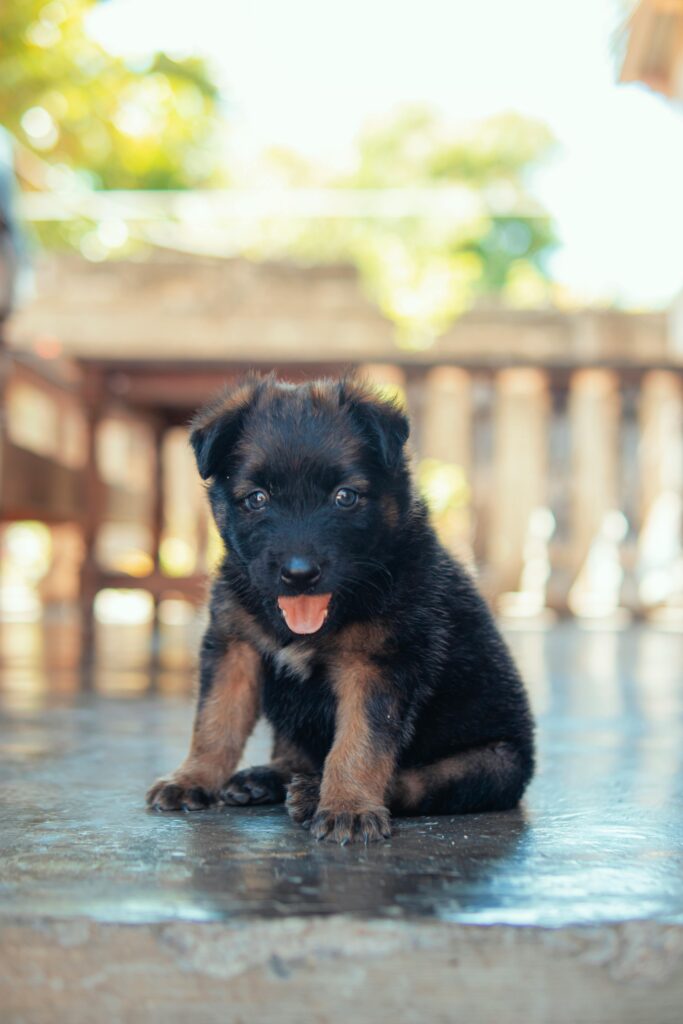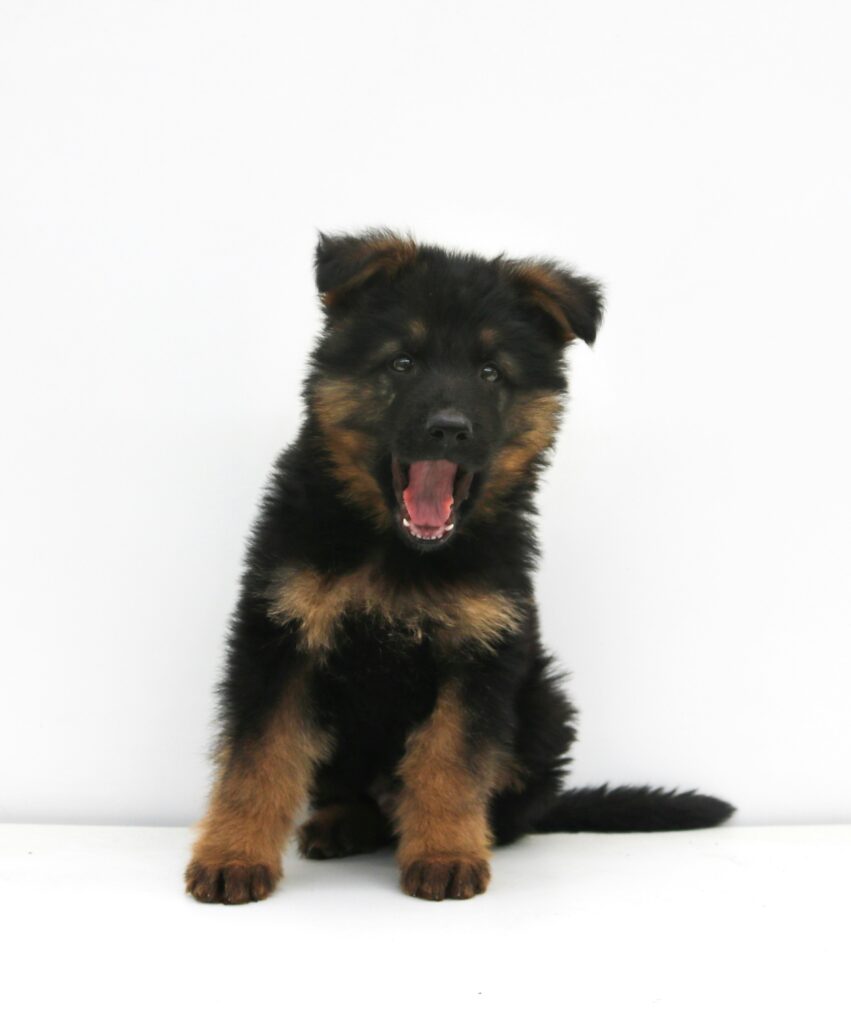
German shepherds are often known for their courageous yet friendly nature; that’s why they are generally chosen as police or military dogs. On the other side, a German Shepherd double coat puppy looks like a giant, cute cotton ball. This German Shepherd double-coat breed’s trait is exclusive among other coats in this beloved breed. It mainly consists of two layers: a dense undercoat that helps in insulation and a long outer coat that protects the dog from harsh weather conditions. Although maintaining this attractive coat needs effort, it helps your furry friend thrive in distinctive temperatures. Grasping the key aspects of German shepherd coats helps you to understand your dog’s health better and keeps them happy companions.
Quick information
- Origin: Germany
- Life expectancy: 12-14 years
- Height: 5-6 inches (male), 3-5 inches (female)
- Weight: 3-5kg (male), 3-4kg (female)
- Color: black and tan, sable, black and red, or black and cream
- Ideal weather: 22°C
- Price range: Rs. 8000-30000/-
- Energy level: High
- Shedding level: Moderate to high
How to identify a German Shepherd double-coat puppy?
Double-coated German shepherds have visible, luxurious fur. They mainly have two layers of coats. The outer layer is generally rough and helps the dog fight different environmental conditions, for example, rain, dirt, and snow. It is long and is known as the guard layer. While the underlayer is soft, it aids in insulation that keeps the dog warm in colder months and cool in summer by regulating the body temperature according to the environment.
Appearance
Double-coated German shepherds have two dense layers of coats, outer and under. The outer layer protects them from dirt, rain, dust, snow, etc., whereas the undercoat layer works as an insulator for them. They are moderate- to high-shedding breeds. They shed their undercoat seasonally, commonly in autumn and spring, for adaptability purposes. Their coats come in black and tan, red and black, and sable and black. Where tan and black are most common in India. The change in the texture of the coat and density of shedding varies as per the growth.
Characteristics
German shepherds are naturally intelligent and joyful since the puppy stage. They are very energetic dogs, and their grasping power is strong compared to other dog breeds; that’s why they are easy to train. They are very loyal and kind towards their families. They need plenty of early mental stimulation and exercise for healthy growth. They love exploring their surroundings. Due to their numerous traits, they are good police, military, and general guard dogs.
Common double-coated dog problems.
- Matting and tangles
- Several allergies and infections due to poor coat care
- Excessive shedding
- Improper grooming
- Irregular health checkups
- Difficulty regulating temperatures
- Heatstroke
- Sunburn
What are the dos and don’ts for the maintenance of a double-coated German Shepherd?
- They need bathing with shampoos that are mainly made to soften their fur and lower the shedding levels.
- They require regular brushing for healthy teeth. For that, you can use various dog toothbrushes that are available on the market.
- They need enough sleep.
- Required proper hydration and nutrition
- Plenty of exercise and daily social interaction keep their mind and body healthy.
- They require an average of 10°C-25°C for superior growth.
- The owners should use cooling pads for double-coated dogs. Generally, their coat regulates the temperature, but cooling pads ensure the comfort of your pet and are safe to use.
- Regular grooming and monthly veterinary checkups are mandatory.
- You can trim their coats a bit to maintain the look, but never shave or color their coats, as it causes other health implications because of poor coat care.
Monthly expenses of double-coated dogs
They generally require regular expenses on food, grooming, and veterinary care. Expectations of these expenses are:
- Food—Rs. 4000-6000/- per month.
- Grooming—Rs. 2000-4000 terminally
- Veterinary checkups, including vaccinations—Rs 2000-6000/- annually.
Double-coated German Shepherd puppy food and nutrition guide
- Monthly expenses—from Rs. 2000 to 4500/-
- Calories per day—1600-1700 kcal for puppies and 1700-2100 kcal for an adult.
- Essential nutrients needed regularly—Although all puppies are energetic in the initial stage, German shepherds have been highly energetic since the puppy stage. They require a balanced amount of proteins, carbohydrates, fats, fiber, vitamins, and minerals in their daily diet.

Foods that are generally referred to as a German Shepherd double-coat puppy
As these highly active dogs need lots of nutrients in their daily diet, you can give them:
- Chicken
- Fresh fish
- Fresh meat
- Fruits, vegetables
- Home-cooked meals
- Mutton
- Other Customizable dry dog foods for their proper growth.
Foods that should be avoided for German shepherds
As humans are prone to unusual food allergies, the same can be seen in dogs, too. There are still many food items that can produce toxicity and certain stomach infections that may be catastrophic to your dog. For example:
- Avocados
- Milk products
- Fruit seeds
- Garlic
- Onion
- Lemon
- Salt
- Cinnamon
- Almonds
- Sugar
- Cherries
- Oily food
- Mushrooms
- Alcohol
- Tea/Coffee
Grooming of double-coated German Shepherd puppies:

German shepherds require a lot of grooming that generally includes regular brushing to manage their fur, periodic bathing with suitable shampoos, weekly brushing of their teeth, cleaning their ears and eyes, trimming their nails, and regular checkups for ticks and fleas, as they are prone to them.
Here is a precise look at double-coated German Shepherd puppies:
- Brushing—They need frequent brushing, no more than 2-3 times a week, to remove shedding hairs from their body, as they cause itching to them. You can use a bristle brush, undercoat rake, and slicker brush to remove those lost hairs from their body.
- Bathing—for proper cleanliness, German shepherds require periodic bathing that should be at least once or twice a month. To avoid dry skin, use double-coated specific shampoos and wash their body with proper finger movements to improve blood circulation.
- Ear cleaning—check their ears with mild ear solutions and cotton balls to avoid ticks and other infections.
- Eye Cleaning—Use cotton balls to remove eye junk.
- Use dog paw moisturizer—as the dogs are also prone to cracked paws. You need to apply suitable paw-moisturizing creams systematically to soften their paws, snouts, and dry elbows.
- Periodic oiling—To soften the double coats of German shepherds, there are so many dog coat oils on the market that not only maintain their thick, shiny fur but also reduce shedding, itching, and unknown inflammation.
FAQ
1. How can we differentiate between a single-coated and double-coated dog?
You can easily differentiate between a single-coated and a double-coated dog based on their texture. Single-coated German shepherds have a smooth and uniform texture in their single layer of fur, while double-coated German shepherds have two layers of fur: the outer one is thick and dense, while the undercoat is smooth and woolly.
2. How many years does a black and tan German Shepherd live?
All German Shepherd Dogs can easily live up to 12-15 years based on their care and maintenance.
3. Is it true that the double-coated German Shepherd dog is part wolf?
Double-coated German shepherds are not wolf dogs, but they share a common ancestor. They have minor similarities in behavior, but they are not wolf-dog hybrids.
4. Is there any difference between German shepherds and Alsatians?
No, there is no difference between German shepherds and Alsatians. The UK people used Alsatian” to avoid using “German” at the time of World War I.
5. Is a double-coated German Shepherd good?
Double-coated German shepherds are actually a good choice as pet dogs because they have a climate-adaptable, insulated undercoat and a dense outer coat that protects them from harsh environments like dust, dirt, snow, and rain.
Final words
Although all pet dogs are delicate and require much care, especially when they are at the puppy stage, a German Shepherd double-coat puppy requires special care because of its dense fur coat. They need to be groomed regularly for maintenance of their thick fur, and because they shed a little more than other dogs, they need sufficient nutrition, regular brushing, and suitable double-coated dog shampoos that are easily available in the market. It reduces the level of shedding, particularly the seasonal shedding.
Read more if you want to know about The Best Dog Breeds in India

